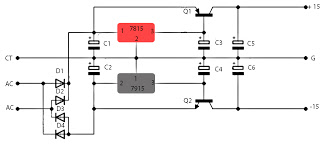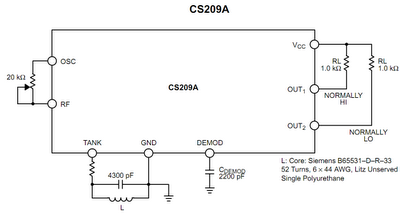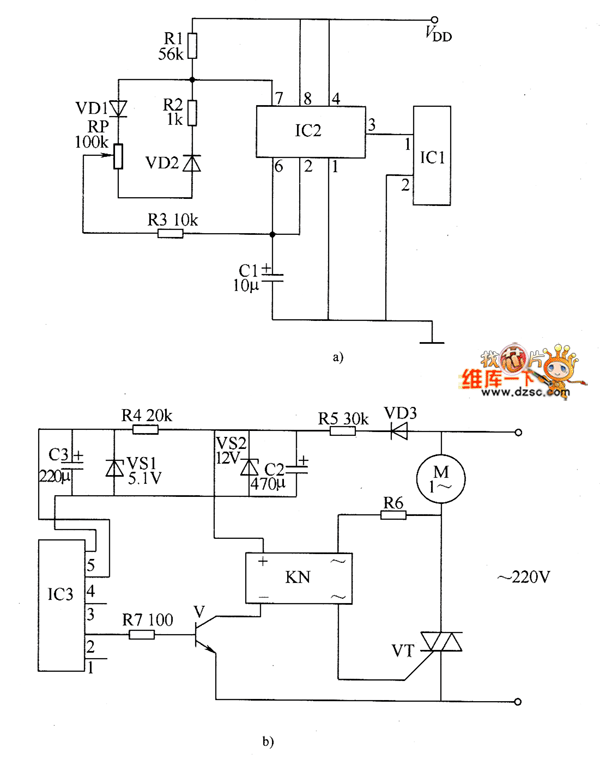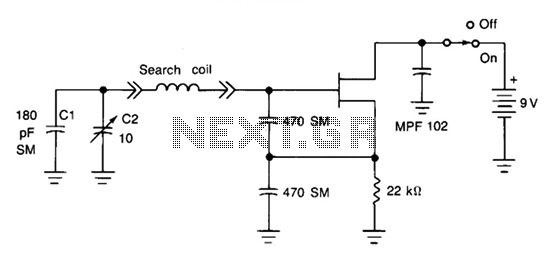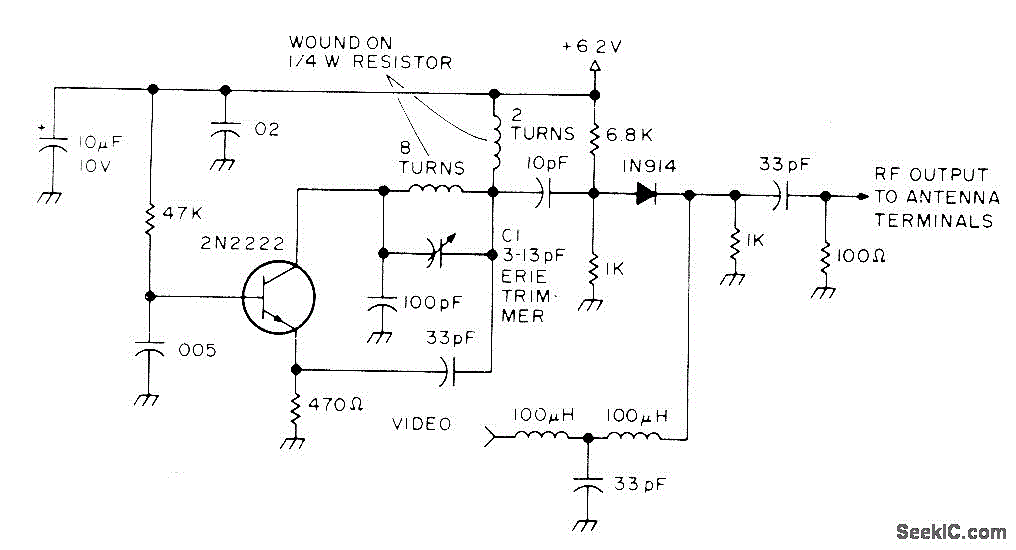
Whistle Switch Circuit

The whistle switch features two tone detectors, each based on an LM567 tone decoder, requiring minimal additional components. It is designed to respond to two or more occurrences of a specific tone or sequence of tones within a defined time frame to avoid false triggering. Depending on the relay employed, it can control various AC loads. A microphone (MIC1) captures the sound, which is then amplified by U2 before being sent to the tone decoders U3 and U4. These devices activate U5-a and U5-b, which in turn drive the relay K1 through associated logic circuits.
The whistle switch circuit operates by utilizing the LM567 tone decoder, which is a versatile integrated circuit designed to detect specific frequencies. The circuit is initiated when the microphone (MIC1) captures sound waves, converting them into electrical signals. These signals are then amplified by the operational amplifier U2 to ensure sufficient signal strength for reliable tone detection.
The LM567 tone decoders U3 and U4 are configured to recognize a specific tone or frequency pattern. The design requires that the target tone be detected at least twice within a predetermined time interval, which enhances the circuit's resistance to false triggers caused by environmental noise or unintended sounds. This feature is crucial in applications where reliability is paramount.
Upon successful detection of the tone, the outputs of the tone decoders trigger the logic circuits within U5-a and U5-b. These logic circuits are responsible for processing the signals from the tone decoders and determining whether to activate the relay K1. The relay serves as a switch that can control various AC loads, allowing for versatile applications in automation or signaling systems.
The choice of relay depends on the specific AC load requirements, ensuring compatibility with different voltage and current ratings. This flexibility makes the whistle switch suitable for various applications, from activating alarms to controlling lights or other devices based on sound input. Overall, the circuit exemplifies an efficient and reliable design for sound-activated control systems. At the heart of the whistle swatch are a pair of tone detectors, each of which is built around an LM567 tone decoder, which are supported by a minimum of additional components. This whistle switch is designed to respond to only two or more occurrences of a specific tone, or sequence of tones, within a specified period to prevent false triggering.
Depending on the relay used, various ac loads can be controlled. Microphone MICl picks up the sound and U2 amplifies the signal and feeds it to tone decoders U3 and U4. These devices trigger U5-a and U5-b and the logic circuits that drive relay Kl.
The whistle switch circuit operates by utilizing the LM567 tone decoder, which is a versatile integrated circuit designed to detect specific frequencies. The circuit is initiated when the microphone (MIC1) captures sound waves, converting them into electrical signals. These signals are then amplified by the operational amplifier U2 to ensure sufficient signal strength for reliable tone detection.
The LM567 tone decoders U3 and U4 are configured to recognize a specific tone or frequency pattern. The design requires that the target tone be detected at least twice within a predetermined time interval, which enhances the circuit's resistance to false triggers caused by environmental noise or unintended sounds. This feature is crucial in applications where reliability is paramount.
Upon successful detection of the tone, the outputs of the tone decoders trigger the logic circuits within U5-a and U5-b. These logic circuits are responsible for processing the signals from the tone decoders and determining whether to activate the relay K1. The relay serves as a switch that can control various AC loads, allowing for versatile applications in automation or signaling systems.
The choice of relay depends on the specific AC load requirements, ensuring compatibility with different voltage and current ratings. This flexibility makes the whistle switch suitable for various applications, from activating alarms to controlling lights or other devices based on sound input. Overall, the circuit exemplifies an efficient and reliable design for sound-activated control systems. At the heart of the whistle swatch are a pair of tone detectors, each of which is built around an LM567 tone decoder, which are supported by a minimum of additional components. This whistle switch is designed to respond to only two or more occurrences of a specific tone, or sequence of tones, within a specified period to prevent false triggering.
Depending on the relay used, various ac loads can be controlled. Microphone MICl picks up the sound and U2 amplifies the signal and feeds it to tone decoders U3 and U4. These devices trigger U5-a and U5-b and the logic circuits that drive relay Kl.
